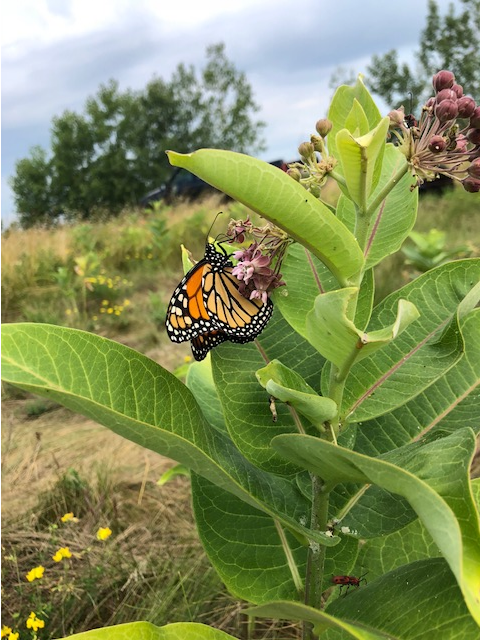Monarch Conservation
During the past 20 years the Eastern migratory population of monarch butterflies in North America has declined significantly, raising concerns about the long-term viability of this iconic species. One of the major hypothesized causes of monarch decline is the near elimination of milkweed host plants from Midwestern row crops through the widespread adoption of herbicide-resistant crops. In response, efforts are underway to increase milkweed abundance in non-crop habitats.
In many cases milkweed is being established into perennial grasslands including roadsides, rights of way, CRP fields, oldfields etc. However, prior research suggests that perennial grasslands support diverse and abundant natural enemy communities which may subject monarch eggs and larvae to high predation pressure. The Landis Lab is investigating ways to maximize monarch oviposition and larval survivorship in the summer breeding grounds as part of the overall conservation effort.
-
What is the most productive breeding habitat for monarch butterflies in order to maximize habitat restoration efforts?
-
What is the role of disturbance in milkweed habitats for monarch butterfly conservation in agroecosystems?
-
What are the potential predators of monarch eggs and larvae in milkweed habitat that might impact their egg-laying decision making?
-
How will other pollinators be impacted by milkweed habitat restoration?
Related Publications
Grassland disturbance increases monarch butterfly oviposition and decreases arthropod predator abundance by Nathan L. Haan and Doug Landis; May 2019




 Print
Print Email
Email